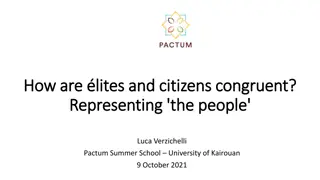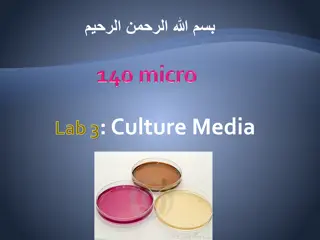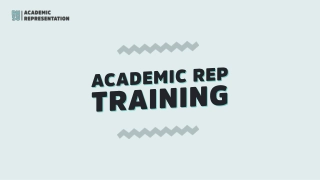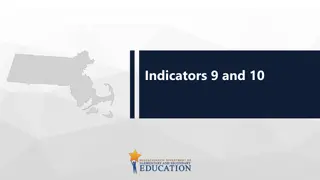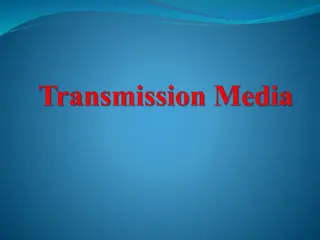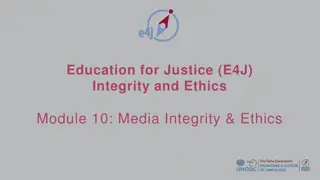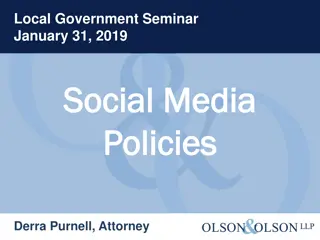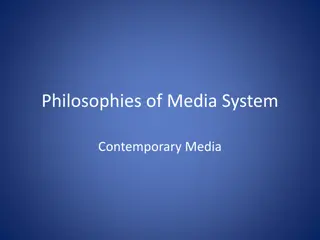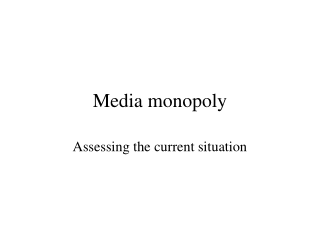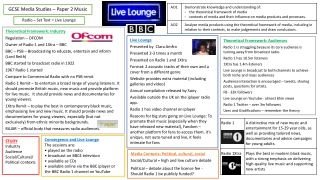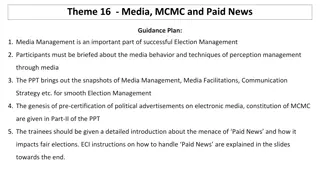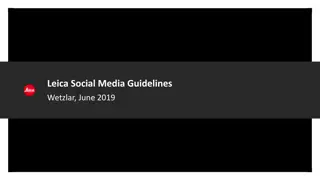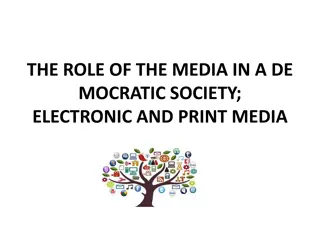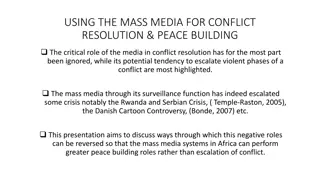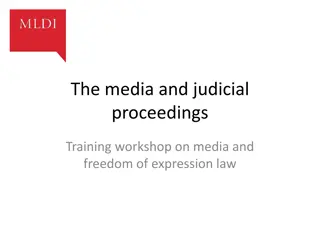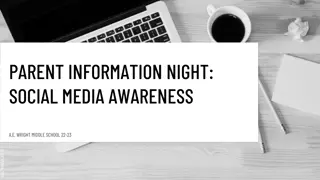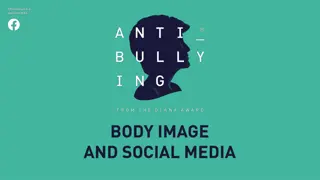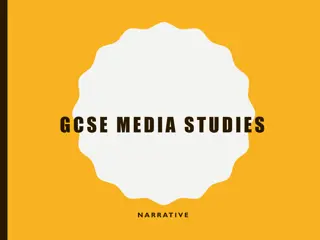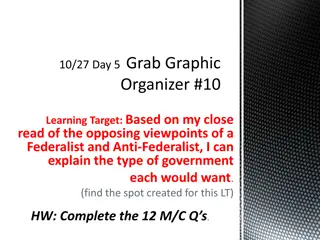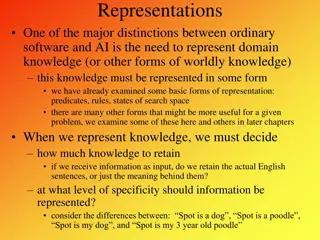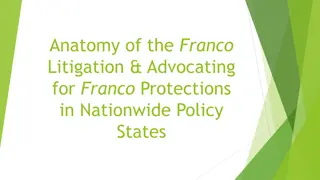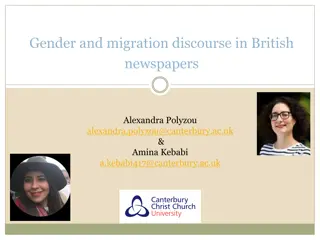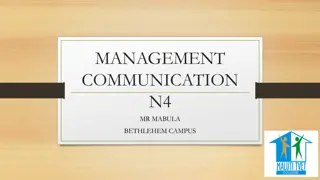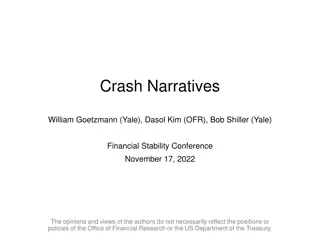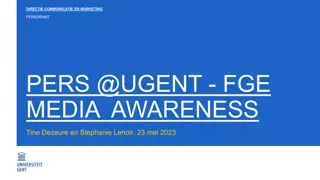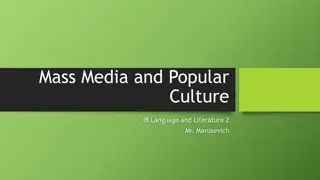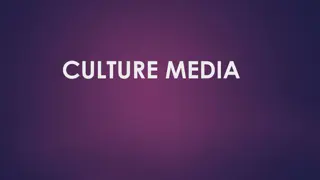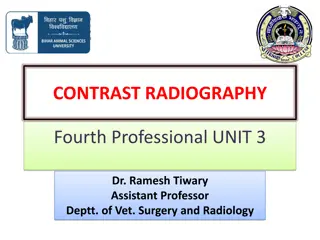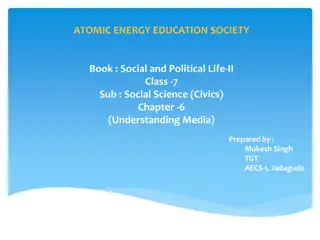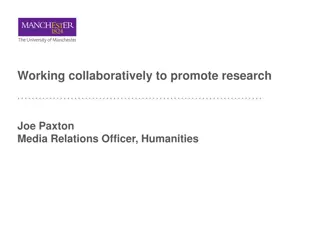Understanding Representation in Media Studies
Representation in media studies refers to how aspects of society such as gender, age, ethnicity, and identity are presented to audiences through media texts. These texts have the power to influence ideas and attitudes by shaping the audience's understanding of important topics. Analyzing media texts involves examining key terms like construction, mediation, selection, and anchorage to understand how ideas and issues are portrayed.
Download Presentation

Please find below an Image/Link to download the presentation.
The content on the website is provided AS IS for your information and personal use only. It may not be sold, licensed, or shared on other websites without obtaining consent from the author. Download presentation by click this link. If you encounter any issues during the download, it is possible that the publisher has removed the file from their server.
E N D
Presentation Transcript
What is Representation? In media studies, representation is the way aspects of society, such as gender, age or ethnicity, are presented to audiences.
Representation is how media texts deal with and present gender, age, ethnicity, national and regional identity, social issues and events to an audience. Media texts have the power to shape an audience s knowledge and understanding about these important topics. This makes them very powerful in terms of influencing ideas and attitudes.
In order to analyse media texts to determine how they've represented ideas and issues, it's important to be familiar with some of the key terms.
Key terms in Representation: Key terms in Representation: Construction This is the way a media text is put together. In a film or television programme this includes the editing and choice of camera angles, in a magazine or newspaper it includes the layout and writing as well as the choice of images.
Mediation This is the process everything goes through before it reaches an audience. This can be how a film script is written and re-written before it makes it to production, how newspaper or magazine photographs are cropped and captioned, or how real life events - like a protest or a speech by a politician - are portrayed in a news report.
Selection This refers to what has been selected to include in a media text. This can be particularly important in newspaper articles, where selecting certain facts over others can change the angle of a story; what is omitted is sometimes as important as what is included.
Anchorage These are the words that go along with images to give those pictures a certain meaning in a specific context. This includes captions and headlines in newspapers and taglines in adverts or on film posters.
Stereotypes These are a simplified representation of a person, groups of people or a place, through basic or obvious characteristics - which are often exaggerated. For example, Vicky Pollard from Little Britain is a stereotypical example of a working class teenage girl. They can be used to describe characters quickly, relying on existing audience recognition. Stereotypes are dangerous as they can lead audiences to generalise about people or places.
Ideology These are ideas and beliefs, held by media producers, which are often represented in their media texts. In a newspaper, the ideology of the owner or senior editors could influence the way certain stories are represented, such as lending support to a particular political party. In a documentary about asylum seekers, the representation of their story could be influenced by the ideology of the filmmaker or producer.
How are representations constructed? How are representations constructed? Camera shots and angles A low angle camera shot can make someone seem more powerful and in control than they really are. A high angle shot of the same person may make them seem less important or influential. Editing Media producers can manipulate the emotions of the audience by representing certain characters or situations through editing. For a documentary style reality show, like Don't Tell the Bride, many hours of film footage may have been recorded, but this footage is edited down to fill a one hour broadcast. How it is edited will determine how the characters are represented and how the audience respond to them.
Audio codes The representation of a person or fictional character can be influenced through their dialogue; if they use slang or speak with a strong accent, audiences will respond to that person in a very different way than someone who speaks perfect English without the trace of an accent. Music can also influence representation in a media text. In a film scene, where a character is walking down a street, a slow, sombre piece of music will create a very different representation to a cheerful, upbeat tune.
Representation in print Representation in print In print based media texts representation is constructed using: Layout and Design Language and Mode of Address Camera shots and angles in any photographs Visual codes Anchorage
Cultural hegemony Antonio Gramsci
Cultural hegemony is a term developed by Antonio Gramsci, activist, theorist, and founder of the Italian Communist party. Writing while imprisoned in a Fascist jail, Gramsci was concerned with how power works: how it is wielded by those in power and how it is won by those who want to change the system.
The dominant idea at the time amongst Marxist radicals like himself was that in order to attain power you needed to seize the means of production and administration that is, take over the factories and the state. But Gramsci recognized that this was not sufficient. In his youth, he had witnessed workers take over factories in Turin, only to hand them back within weeks because they were unsure what to do with the factories, or themselves. Gramsci had also observed the skill of the Catholic Church in exercising its power and retaining the population s allegiance. Gramsci realized that in order to create and maintain a new society, you also needed to create and maintain a new consciousness.






